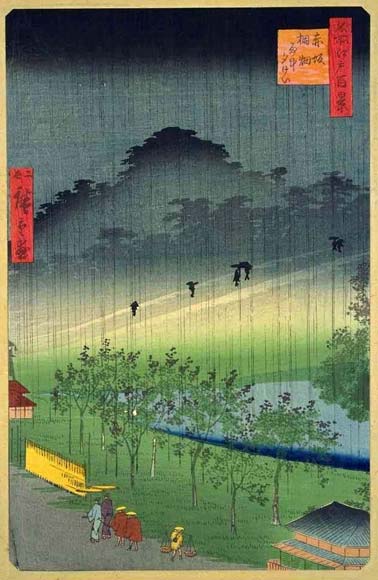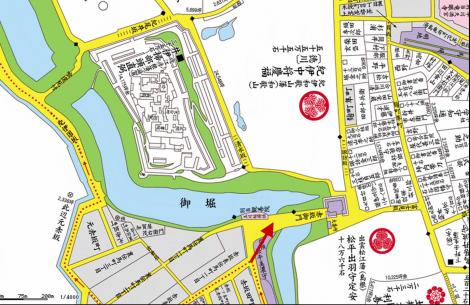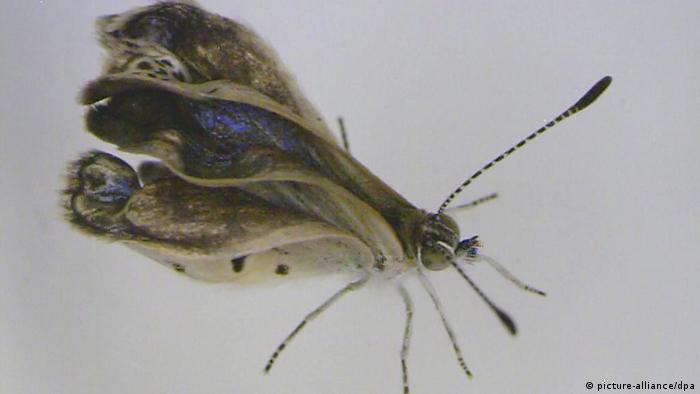Workers at the crippled Fukushima No. 1 nuclear plant
were ordered to cover their dosimeters with lead plates to keep
radiation doses low enough to continue working under dangerous
conditions, the Asahi Shimbun has learned.
Some refused the orders. Others raised questions about their
safety and the legality of the practice. But the man in charge, a senior
official of a subcontractor of Tokyo Electric Power Co., warned them
that they would lose their jobs--and any chance of employment at other
nuclear plants--if they failed to comply.
The pocket-sized dosimeters sound an alarm when they detect
high radiation levels. A worker who has been exposed to an accumulated
dose of 50 millisieverts within a year must stop working and stay away
from the area for a certain period of time.
The 54-year-old senior official at Build-Up, a midsize
construction company based in Fukushima Prefecture, worked out a system
to ensure the dosimeters would not reach the limit, according to the
workers. It included having the workers themselves build the lead cover
that would prevent the radiation from reaching the dosimeters.
The president of Build-Up acknowledged on July 21 that the
senior official had nine people work at the nuclear plant for about
three hours on Dec. 1 with their dosimeters shielded by the lead plates.
The senior official, who acted as a site foreman, initially
denied giving such instructions. But he later admitted to his actions
over the phone to the Build-Up president.
A number of the workers explained the process in detail. And
one of them provided The Asahi Shimbun with a recording of a meeting the
Build-Up foreman had with defiant workers on the night of Dec. 2 at an
inn in Iwaki, Fukushima Prefecture, where the workers stayed.
The conversation shows the foreman growing increasingly agitated by the workers’ refusal to rig their dosimeters.
The workers’ job was to wind insulating material around hoses
of a treatment system for radioactive water near the No. 1, No. 2, No. 3
and No. 4 reactor buildings of the Fukushima No. 1 nuclear plant.
TEPCO, the operator of the Fukushima plant, assigned the task
to Tokyo Energy and Systems Inc., a TEPCO group company, which then
subcontracted part of the work to Build-Up.
The 10 or so workers organized for the task included Build-Up
employees and others dispatched by brokers from various parts of Japan.
According to workers, about half of the team assembled in an
area of the nuclear plant on Nov. 30, where the Build-Up foreman
presented a lead plate about 1 square meter in size and several
millimeters thick.
He ordered the workers to draw lines on the plate and cut out
pieces using special scissors. The workers then used vises and hammers
to reshape the pieces so that they would cover the front, sides and
bottom of their personal dosimeters.
On Dec. 1, the Build-Up foreman instructed the team members
to cover their dosimeters with the lead plates. But three of the workers
refused, prompting the boss to hold a meeting with them on Dec. 2.
‘YOU CAN'T MAKE LIVING WHEN THE DOSE RUNS OUT’
The Build-Up foreman denied the conversation took place. But the defiant workers said the recording of the meeting is accurate.
According to the recording, the foreman said, “Everybody who
works for nuclear plants know that the limit is 50 millisieverts per
year. If you get exposed to a lot of radiation, you will reach that
limit in less than a year. It could run out in three or four months."
He continued: "You can't live by nuclear plants around the
year unless you take care of your own radiation doses. You simply can't
go and work somewhere else when you are not allowed to work for nuclear
plants. You can no longer make a living when the dose runs out. Do you
understand that? The 50 millisieverts just keeps running out."
One of the workers tried to interject, saying, "As for me, this is something that we shouldn't do ... ."
But the foreman interrupted, saying: "I know only too well
that we shouldn't do that. If you don't want to do so, you don't have
to."
Another worker gave his opinion: "I think this is almost a crime."
The foreman retorted: "Did I ever coerce you? I am just
saying, 'Please do it if you can convince yourself to do it for your own
sake.'”
The foreman also supervises work projects at other nuclear
plants in Japan. He said in the recording that he could not allow all
the doses at the Fukushima No. 1 nuclear plant to be used up.
The workers said the foreman likely wanted all of the workers
to use the lead shields to prevent wide variations in the readings on
the dosimeters.
At the meeting, they continued to demand an explanation on why they had to use the lead covers.
"Unless you use a lead shield, you can no longer work when the dose is up," the foreman emphasized.
"YOU ARE NOT CUT OUT FOR WORKING AT NUCLEAR PLANTS"
The foreman also recalled a preliminary inspection made
in late November by Build-Up staff near the No. 1 through No. 4 reactor
buildings. The area was still littered with debris from the hydrogen
explosions of March last year, and the foreman said his personal
dosimeter began beeping.
"I realized at once that (the radiation levels) were high. I
decided, at my own discretion, that we should do that when we work in
that area."
The workers said they were convinced that "do that" meant rigging the dosimeters.
The foreman also indicated he had faked his own radiation
dose readings in the past. "I have done so before in order to take care
of my doses," he said.
His words were still not enough to persuade the workers, so he adopted a tougher tone.
"Perhaps you are not cut out for working at nuclear plants," he said. "Go back to your hometown and do some other job."
Both sides remained far apart during the one-hour talk. The
three workers quit their jobs and returned to their hometowns the
following day.
But the other workers complied.
‘MAKE SURE NOBODY SEES WHAT YOU ARE DOING’
TEPCO records show that one Build-Up worker was exposed
to more than 10 millisieverts of radiation in December alone, placing
him near the top percentile among the approximately 5,000 people who
worked at the Fukushima No. 1 nuclear plant at the time. However, he was
believed to have used a lead shield over his dosimeter, meaning he was
likely exposed to even larger doses of radiation.
According to the Build-Up workers, on Dec. 1, they changed
into protective suits at the J-Village, a soccer stadium 20 kilometers
south of the Fukushima No. 1 nuclear plant that is used as a relay base
for workers. They said the Build-Up foreman then issued instructions.
"Today, we will enter areas of high radiation levels. We will wear the lead boxes," he said.
The foreman told the workers to take a bus to the Main
Anti-Earthquake Building on the premises of the nuclear plant, where
they would receive TEPCO's dosimeters. They were to put the devices in
their breast pockets beneath their protection suits and change into a
vehicle for exclusive use by Build-Up staff.
Once inside the Build-Up vehicle, each worker would be given a
lead cover. The workers were to rip their protection suits, cover their
personal dosimeters with the lead sheaths and cover the tears in their
protective suits with tape.
"Make sure nobody sees what you are doing," he told each worker. "Did you understand? You'll do so, won't you?"
However, the three workers surprised the foreman by rejecting his orders.
"I am not forcing you. Go back if you don't want to do so,"
he said. He walked toward the bus bound for the Fukushima No. 1 nuclear
plant with the other workers who agreed to follow his instructions.
The foreman picked one man from the team and told him to drive the defiant workers to the lodging in Iwaki.
"No other company wants to work in areas with high radiation
levels," the driver told the workers during the ride. "That's why that
kind of work ends up in the hands of Build-Up. But you can make good
money that way."
(This article was written by Jun Sato, Chiaki Fujimori, Miki Aoki, Tamiyuki Kihara and Takayuki Kihara.)
Sunday, Jan. 8, 2012
Is the ongoing crisis surrounding the Fukushima No. 1 nuclear power plant being accurately reported in the Japanese media?
 |
| Official lines: Chief Cabinet Secretary Yukio Edano on April 17, 2011, during his first visit to Fukushima after the disasters triggered by March 11's Great East Japan Earthquake. KYODO PHOTO |
No, says independent journalist Shigeo Abe, who claims the authorities, and many journalists, have done a poor job of informing people about nuclear power in Japan both before and during the crisis — and that the clean-up costs are now being massively underestimated and underreported.
"The government says that as long as the radioactive leak can be dammed from the sides it can be stopped, but that's wrong," Abe insists. "They're going to have to build a huge trench underneath the plant to contain the radiation — a giant diaper. That is a huge-scale construction and will cost a fortune. The government knows that but won't reveal it."
The disaster at the Fukushima plant operated by Tokyo Electric Power Co. (Tepco) again revealed one of the major fault lines of Japanese journalism — that between the mainstream media and the mass-selling weeklies and their ranks of freelancers.
The mainstream media has long been part of the press-club system, which funnels information from official Japan to the public. Critics say the system locks the country's most influential journalists into a symbiotic relationship with their sources, and discourages them from investigation or independent lines of analysis.
Once the crisis began, it was weekly Japanese magazines that sank their teeth into the guardians of the so-called nuclear village — the cozy ranks of polititicians, bureaucrats, academics, corporate players and the media who promote nuclear power in this country.
Shukan Shincho dubbed Tepco's management "war criminals." Shukan Gendai named and shamed the most culpable of Japan's goyō gakusha (unquestioning pronuclear scientists; aka academic flunkies).
Meanwhile, the Asahi Shimbun newspaper's well-respected weekly magazine AERA revealed that local governments manipulated public opinion in support of reopening nuclear plants. The same magazine's now-famous March 19, 2011, cover story showing a masked nuclear worker and the headline "Radiation is coming to Tokyo" was controversial enough to force an apology and the resignation of at least one columnist (though the headline was in fact correct).
Others explored claims of structural bias in the mainstream press.
Japan's power-supply industry, collectively, is Japan's biggest advertiser, spending ¥88 billion (more than $1 billion) a year, according to the Nikkei Advertising Research Institute. Tepco's ¥24.4 billion alone is roughly half what a global firm as large as Toyota spends in a year.
Many journalists were tied to the industry in complex ways. A Yomiuri Shimbun science writer was cited in "Daishinsai Genpatsu Jiko to Media" ("The Media and the Nuclear Disaster"; Otsuki Shoten, 2011) as working simultaneously for nuclear-industry watchdogs, including the Central Research Institute of Electric Power Industry (sic). Journalists from the Nikkei and Mainichi Shimbun newspapers have also reportedly gone on to work for pronuclear organizations and publications.
Before the Fukushima crisis began, Tepco's advertising largesse may have helped silence even the most liberal of potential critics. According to Shukan Gendai, the utility spent roughly $26 million on advertising with the Asahi Shimbun. Tepco's quarterly magazine, Sola, was edited by former Asahi writers.
The financial clout of the power-supply industry, combined with the press-club system, surely helped discourage investigative reporting and keep concerns about nuclear power and critics of plants such as the aging Fukushima complex and Chubu Electric Power Co.'s Hamaoka facility in Omaezaki, Shizuoka Prefecture, which sits astride numerous faults, well below the media radar.
Throughout the Fukushima crisis, the mainstream media has relied heavily on pronuclear scientists' and Tepco's analyses of what was occurring. After the first hydrogen blast of March 12, the government's top spokesman, Yukio Edano, told a press conference: "Even though the reactor No. 1 building is damaged, the containment vessel is undamaged. ... On the contrary, the outside monitors show that the (radiation) dose rate is declining, so the cooling of the reactor is proceeding."
Any suggestion that the accident would reach Chernobyl level was, he said, "out of the question."
Author and nuclear critic Takashi Hirose noted afterward: "Most of the media believed this. It makes no logical sense to say, as Edano did, that the safety of the containment vessel could be determined by monitoring the radiation dose rate. All he did was repeat the lecture given him by Tepco."
As media critic Toru Takeda later wrote, the overwhelming strategy throughout the crisis, by both the authorities and big media, seems to be to reassure people, not alert them to possible dangers.
By late March, the war in Libya had knocked Japan from the front pages of the world's newspapers, but there was still one story that was very sought after: life inside the 20-km evacuation zone around the Fukushima atomic plant.
Thousands of people had fled and left behind homes, pets and farm animals that would eventually die. A small number of mainly elderly people stayed behind, refusing to leave homes that often had been in their families for generations. Not surprisingly, there was enormous global interest in their story and its disturbing echoes of the Chernobyl catastrophe 25 years earlier.
Yet not a single reporter from Japan's big media filed from inside the evacuation zone — despite the fact that it was not yet illegal to be there. Some would begin reporting from the area much later after receiving government clearance — the Asahi Shimbun newspaper sent its first dispatch on April 25, when its reporters accompanied the commissioner-general of the National Police Agency. Later, they would explain why they stayed away and — with the exception of government-approved excursions — why they continue to stay away.
 |
| Smoke signals: The leaking Fukushima No. 1 nuclear power plant on March 20, 2011. Critics accuse Japan's mainstream media of failing to properly report the ongoing crisis. KYODO PHOTO |
"Journalists are employees and their companies have to protect them from dangers," explained Keiichi Sato, a deputy editor with the News Division of Nippon TV.
"Reporters like myself might want to go into that zone and get the story, and there was internal debate about it, but there isn't much personal freedom inside big media companies. We were told by our superiors that it was dangerous, so going in by ourselves would mean breaking that rule. It would mean nothing less than quitting the company."
The cartel-like behavior of the leading Japanese media companies meant they did not have to fear being trumped by rivals. In particularly dangerous situations, managers of TV networks and newspapers will form agreements (known as hōdō kyōtei) in effect to collectively keep their reporters out of harm's way.
Teddy Jimbo, founder of the pioneering Internet broadcaster Video News Network, explains: "Once the five or six big firms come to an agreement that their competitors will not do anything, they don't have to be worried about being scooped or challenged."
Frustrated by the lack of information from around the plant, Jimbo took his camera and dosimeters into the 20-km zone on April 2 and uploaded a report on YouTube that scored almost 1 million views. He was the first Japanese reporter to present TV images from Futaba and other abandoned towns (though images from the zone, shot during government-approved incursions, later appeared on mainstream TV news programs).
"For freelance journalists, it's not hard to beat the big companies because you quickly learn where their line is," Jimbo said. "As a journalist I needed to go in and find out what was happening. Any real journalist would want to do that." He later sold some of his footage to three of the big Japanese TV networks: NHK, NTV and TBS.
Says Abe: "The government's whole strategy for bringing the plant under control will have to be revised. The evacuees will never be able to return. They can't clean up the radiation. Will the media report this? I'm waiting for that."













 週日﹐10名日本活動人士登上釣魚島﹐
週日﹐10名日本活動人士登上釣魚島﹐
















 Winfrid Eisenberg fears that people will increasingly see the effects of nuclear radiation
Winfrid Eisenberg fears that people will increasingly see the effects of nuclear radiation


